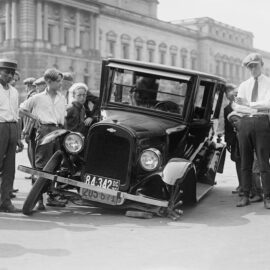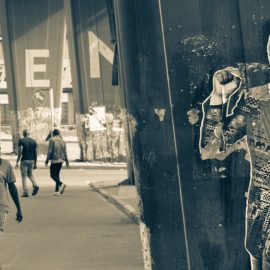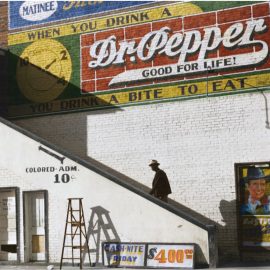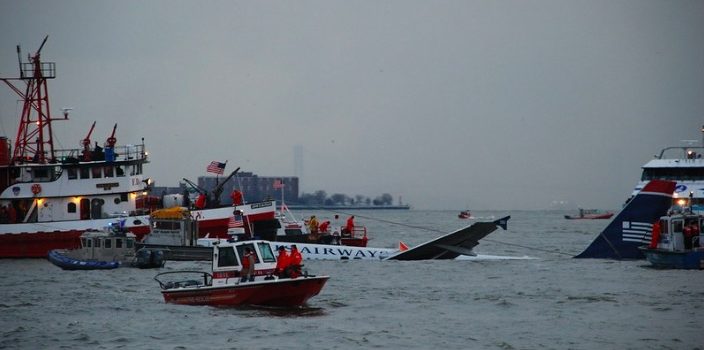
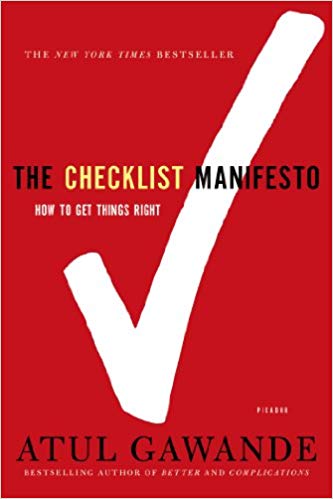
This article is an excerpt from the Shortform summary of "The Checklist Manifesto" by Atul Gawande. Shortform has the world's best summaries of books you should be reading.
Like this article? Sign up for a free trial here .
On Jan. 25, 2009, US Airways Flight 1549 left La Guardia Airport with 155 on board, hit a flock of geese, lost both engines, and crash-landed in the icy Hudson River. Investigators later called Sully’s Hudson River landing the most successful ditching in aviation history. Pilot Chesley B. “Sully” Sullenberger III was hailed as a hero.
We’ll cover why Sully didn’t consider himself the primary hero of the “miracle on the Hudson,” and we’ll discuss how a simple checklist can save lives, both in the air and in everyday situations.
Sully’s Hudson River Landing & Redefining Heroism
Chesley Sullenberger repeatedly emphasized that it was a crew effort. Many factors contributed to the “miracle on the Hudson”: procedures and checklists, the fly-by-wire computer system that controlled the airplane’s glide to the water, the copilot, and the cabin crew who handled the evacuation. Success was as much a result of teamwork and adherence to procedure as it was of skill and coolness under pressure.
This is the story of Sully’s Hudson River landing. Chesley Sullenberger and First Officer Jeffrey Skiles, equally experienced pilots, were flying together for the first time. To begin with, they ran through their checklists and introduced themselves to each other and the cabin crew. They held a briefing, discussing the flight plan, potential concerns, and how they’d handle problems. They created a team, ready for the unexpected, which occurred ninety seconds after takeoff when the plane collided with a flock of geese. Two engines were each hit by at least three geese and immediately lost power.
Sullenberger made two key decisions almost instinctively: to take over flying the airplane and to land in the Hudson River. He knew the plane had too little speed to make it back to La Guardia or to Teterboro Airport in New Jersey. He had more hours than Skiles in flying the A320, and the key landmarks to avoid hitting were visible from his left-side window.
Skiles had just completed A320 training and was more recently familiar with the checklists. While Sullenberger looked for a place to land, Skiles went through the engine failure checklists to try and restart the engines, while also preparing for ditching. First, he focused on restarting, since that offered the best chance of survival. He completed the restart sequence without success on both engines, a remarkable feat in the short time they had. Next, he began ditching procedures: he sent distress signals, notified the crew, and configured the plane for an emergency water landing.
During Sully’s flight, he focused on the descent to the water. The fly-by-wire control system kept the plane from drifting and wobbling, and it maintained an optimal angle for descent. It enabled the pilot to focus on other critical things, including finding a landing site near ferries and keeping the wings level as the plane struck the water.
The three flight attendants also followed protocols: they instructed passengers to put their heads down and brace for impact. After landing, they instructed everyone to put on life vests, got the doors open, and made sure passengers didn’t waste time gathering belongings. They got everyone out in three minutes, with only two of the three exits useable. Sullenberger checked the condition of the plane and passengers, while Skiles ran the evacuation checklist, for instance making sure fire hazards were dealt with. Ferries and boats arrived to pick up passengers, while air in the fuel tanks kept the plane afloat. Sullenberger walked the aisle to make sure no one had been forgotten, and only then finally left the plane. Sully’s Hudson River landing had saved over one-hundred lives.
Who was the hero? The 155 people on board were saved by something much bigger than individual heroism and skill. It was the crew’s ability to follow vital procedures in a crisis, stay calm, and recognize where to improvise and not improvise. They operated as a team under complex and dire circumstances, having prepared to do so before the crisis.
Sully’s Hudson River landing, and team on Sully’s flight, exemplify the definition of heroism in the modern era.
Adding Discipline as a Value
All professional occupations have a code of conduct with three expectations in common:
- Selflessness: You place the needs of others who depend on you above your own.
- Skill: You strive for excellence in knowledge and expertise.
- Trustworthiness: You act responsibly toward others.
Unlike most professions, aviation has a fourth expectation: discipline, in following procedures and working with others. This was the key to the success of Sully’s Hudson River landing. In medicine, the fourth element is autonomy, which runs counter to discipline. However, in large enterprises involving complex, high-risk technologies, where the knowledge needed exceeds the capacity of any individual, what’s needed is discipline.
The aviation industry has made discipline a norm. They study failures and incorporate checklists, which they regularly revisit and refine. People like Sully employ procedures and teamwork to make the systems we depend on work.
Medicine, however, obsesses over having great components but pays little attention to making them work together. Medical professionals don’t study failures with the intent of improving solutions. They just work harder, dropping the same balls repeatedly. The only viable option, given the complexity of the world, is to learn from and emulate pilots like Sullenberger. We can all learn from Sully’s Hudson River landing.
———End of Preview———

Like what you just read? Read the rest of the world's best summary of "The Checklist Manifesto" at Shortform . Learn the book's critical concepts in 20 minutes or less .
Here's what you'll find in our full The Checklist Manifesto summary :
- How checklists save millions of lives in healthcare and flights
- The two types of checklists that matter
- How to create your own revolutionary checklist



